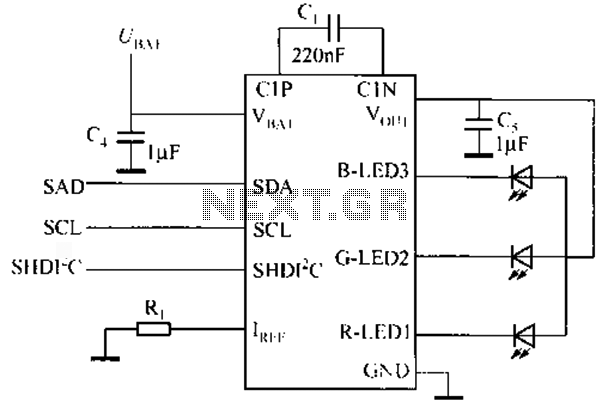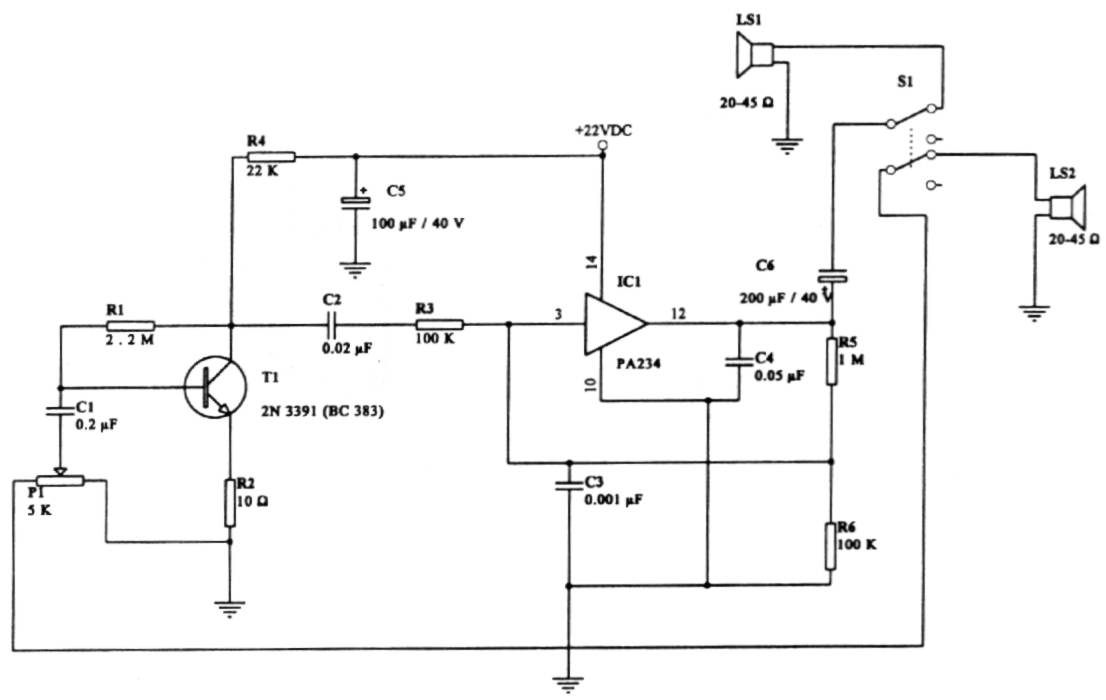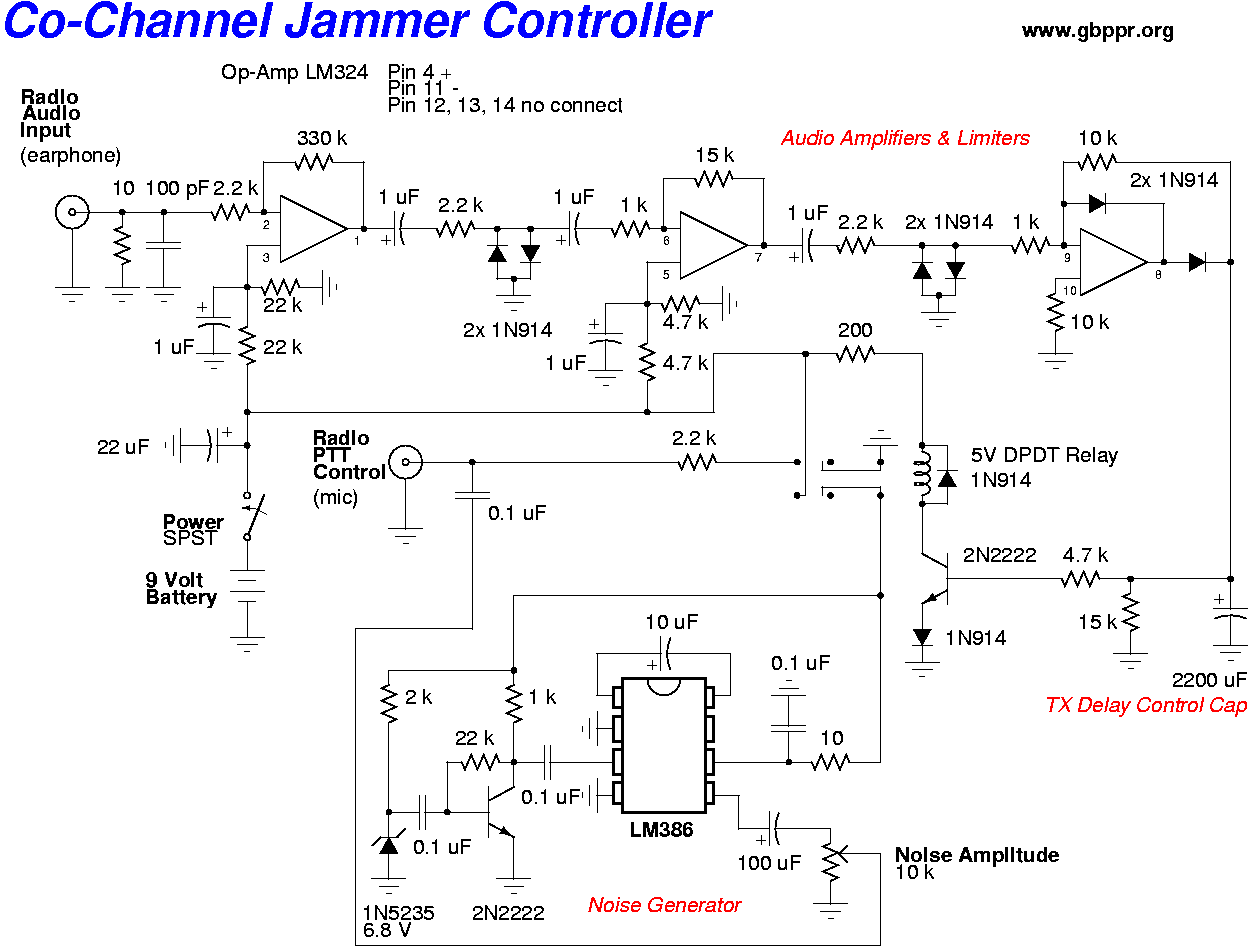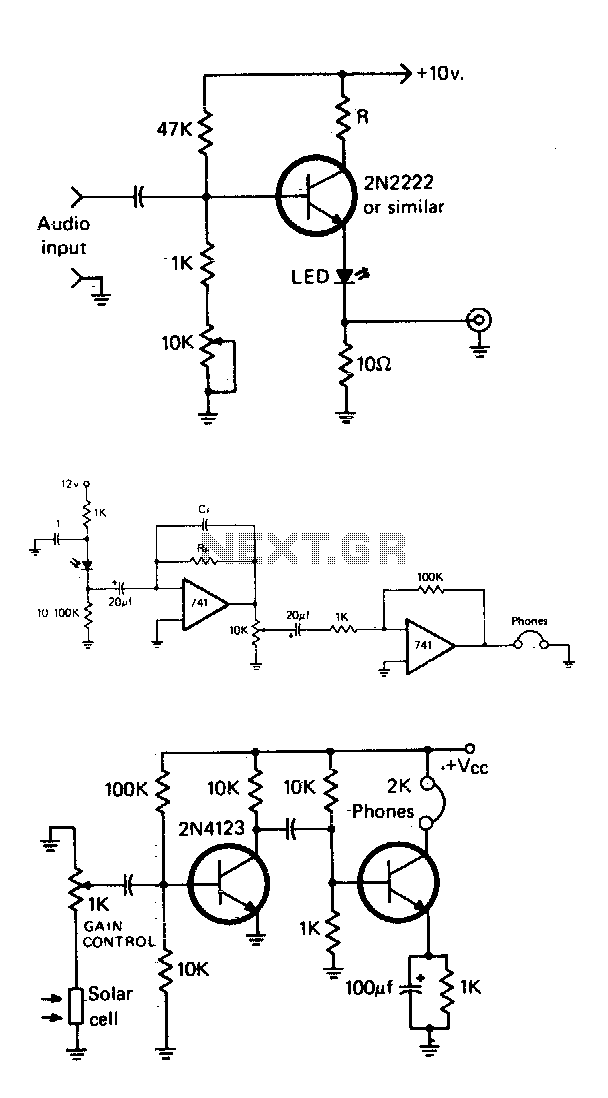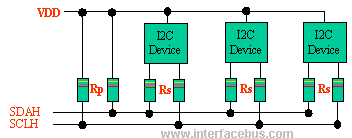
I2C communication between PICs
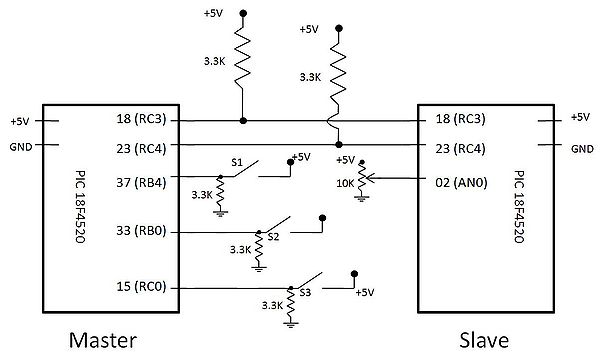
I2C, pronounced "I squared C," stands for Inter-Integrated Circuit. This protocol was developed by Philips Semiconductors around 1992 to facilitate easy communication between components on the same circuit board, achieving transfer rates of up to 400 kbit/sec. It utilizes a two-line communication method (plus a common ground) for one master device to control up to 112 slave devices. Although multiple masters can exist on the same I2C bus, this discussion focuses on a single master configuration. The two lines are designated as SCL (Clock line) and SDA (Data line). The PIC 4520 microcontroller uses pin 18 for SCL and pin 23 for SDA in hardware I2C mode. It is important to note that pin 18 is not accessible on the prototyping board; however, an additional wire can be added as illustrated in the example image. Alternative lines on the prototyping board can be utilized for software I2C communication, although this method achieves data rates that are less than one-fourth those of hardware I2C and will not be covered here. I2C requires the lines to be high unless the master or slave pulls the line low, necessitating the use of pull-up resistors on both the clock and data lines. The data line can only change when the clock line is low, and data is read from the data line only when the clock line is high, allowing for one bit to be transferred per clock cycle. The master device initiates communication by sending a start bit followed by the 7-bit address of the desired slave device. The subsequent bit indicates whether the master intends to write (0) to or read (1) from the slave. The slave responds with an acknowledgment bit, and the transmission continues based on whether the master is reading from or writing to the device. A simple circuit diagram is provided, depicting the master PIC with two push-button switches. Note that pin 18 (RC3) is not connected to the circuit board, but a wire can be soldered adjacent to the PIC. Both SDA and SCL require pull-up resistors, as either the master or the slave can pull the line low to halt communication. To communicate with a device, the following lines of code are used, where 0x14 is the device address. The first line issues a start command, prompting all slave devices on the bus to await their address. The next command writes the address of the slave, followed by the data sent to the slave. All communication must conclude with a stop command; otherwise, the line remains open, preventing future communication until the command is executed.
i2c_start(); //begin transmission
i2c_write(0x14); //select address of device to communicate with
i2c_write(data); //send actual data
i2c_stop(); //terminate communication
For the slave PIC, it is necessary to define the output pins, assign the device name, and enforce hardware I2C communication. The device is randomly assigned the name 0x14, but it could be any even hexadecimal number, with a few exceptions noted in the code.
To read from the slave, the first byte sent is the address of the slave. The second byte corresponds to the location of the requested data on the slave. Communication is terminated before being restarted.
i2c_start (); //begin communication
i2c_write (0xa0); //send slave address
i2c_write (0x02); //request slave internal memory address for analogue data
i2c_stop(); //stop write cycle to shift to read cycle
i2c_start (); //send repeated start command to begin read cycle
i2c_write (0xa1); //add 1 to the address to indicate a read bit
result = i2c_read(0); //read analogue information from the slave
i2c_stop (); //terminate communication
output_d(result); //display analogue
The I2C protocol is a versatile and efficient means of communication in embedded systems, particularly when multiple devices need to interact with minimal wiring. The protocol's simplicity allows for easy integration of various components, making it a popular choice in a wide range of applications, including sensor data acquisition, device control, and more. The use of pull-up resistors is critical in maintaining signal integrity, ensuring reliable communication between the master and slave devices. Proper implementation of the start and stop commands is essential for effective data transfer, as it delineates the boundaries of communication sessions.I2C is pronounced "I squared C" and stands for Inter-Integrated Circuit. This protocol was designed by Phillips Semiconductors around 1992 to allow easy communication between components on the same circuit board and can achieve transfer rates of up to 400 kbit/sec. Is is a 2 line (plus common ground) communication method for one master device to c ontrol up to 112 slave devices. While it is possible to have multiple masters on the same I2c bus, this page will only deal with a one master configuration. The two lines are named SCL and SDA where SCL is the CLock line and SDA is the DAta line. The PIC 4520 is designed to use pin 18 as SCL and pin 23 as SDA for hardware I2C. Note that pin 18 is one of the only pins not accessible on the prototyping board. An additional wire can be added as shown in the example image. It is possible to use lines accessible from the prototyping board to communicate via software I2C, but this has data rates of less than one fourth those of hardware I2C and will therefore be omitted.
I2C requires the lines to be high unless the master or the slave is pulling the line down, so you will need to use pull up resistors on both the clock and data lines. The data line can only change while the clock line is low. The data line is only read when the clock line is high and therefore 1 bit can be transferred per cycle of the clock line.
The master is initially sends a start bit followed by the 7-bit address of the slave it wishes to communicate with. The next bit represents whether it wishes to write(0) to or read(1) from the slave. The slave then responds with an acknowledge bit. The transmission continues according to whether the master is attempting to read to or write from the device.
Below is a simple circuit diagram showing the master PIC with 2 close button switches. Note that pin 18 (RC3) is not brought out to the circuit board, but a wire can be soldered next to the PIC itself. Both SDA and SCL need pull up resistors as either the master or the slave can hold the line low to stop communication.
To communicate with a device, we use the following lines of code where 0x14 is the device name. The first line is the issuing of the start command and this forces all slave devices on the bus to wait for their address. The next write command is the address of the slave. The following byte is the data being sent to the slave. All communication must terminate with a stop command or the line will remain open and no future communication is possible until the command is given.
i2c_start(); //begin transmission i2c_write(0x14); //select address of device to communicate with i2c_write(data); //send actual data i2c_stop(); //terminate communication For the Slave PIC, we first need to define the output pins, define the name of the device and force hardware I2C communication. This device was randomly assigned name 0x14, but could have been just about any even hex number with a few exceptions noted below code.
0000 000 1 START byte - for slow micros without I2C h/w 0000 001 X CBUS address - a different bus protocol 0000 010 X Reserved for different bus format 0000 011 X Reserved for future purposes 0000 1XX X Hs-mode master code 1111 1XX X Reserved for future purposes 1111 0XX X 10-bit slave addressing To read from the slave, the first byte sent is the address of the slave. The second byte is the location of the data on the slave being requested. The communication is terminated before being restarted. i2c_start (); //begin communication i2c_write (0xa0); //send slave address i2c_write (0x02); //request slave internal memory address for analogue data i2c_stop(); //stop write cycle to shift to read cycle i2c_start (); //send repeated start command to begin read cycle i2c_write (0xa1); //add 1 to the address to send a read bit result = i2c_read(0); //read analogue information from the slave i2c_stop (); //terminate communication output_d(result); //display analogue
🔗 External reference
i2c_start(); //begin transmission
i2c_write(0x14); //select address of device to communicate with
i2c_write(data); //send actual data
i2c_stop(); //terminate communication
For the slave PIC, it is necessary to define the output pins, assign the device name, and enforce hardware I2C communication. The device is randomly assigned the name 0x14, but it could be any even hexadecimal number, with a few exceptions noted in the code.
To read from the slave, the first byte sent is the address of the slave. The second byte corresponds to the location of the requested data on the slave. Communication is terminated before being restarted.
i2c_start (); //begin communication
i2c_write (0xa0); //send slave address
i2c_write (0x02); //request slave internal memory address for analogue data
i2c_stop(); //stop write cycle to shift to read cycle
i2c_start (); //send repeated start command to begin read cycle
i2c_write (0xa1); //add 1 to the address to indicate a read bit
result = i2c_read(0); //read analogue information from the slave
i2c_stop (); //terminate communication
output_d(result); //display analogue
The I2C protocol is a versatile and efficient means of communication in embedded systems, particularly when multiple devices need to interact with minimal wiring. The protocol's simplicity allows for easy integration of various components, making it a popular choice in a wide range of applications, including sensor data acquisition, device control, and more. The use of pull-up resistors is critical in maintaining signal integrity, ensuring reliable communication between the master and slave devices. Proper implementation of the start and stop commands is essential for effective data transfer, as it delineates the boundaries of communication sessions.I2C is pronounced "I squared C" and stands for Inter-Integrated Circuit. This protocol was designed by Phillips Semiconductors around 1992 to allow easy communication between components on the same circuit board and can achieve transfer rates of up to 400 kbit/sec. Is is a 2 line (plus common ground) communication method for one master device to c ontrol up to 112 slave devices. While it is possible to have multiple masters on the same I2c bus, this page will only deal with a one master configuration. The two lines are named SCL and SDA where SCL is the CLock line and SDA is the DAta line. The PIC 4520 is designed to use pin 18 as SCL and pin 23 as SDA for hardware I2C. Note that pin 18 is one of the only pins not accessible on the prototyping board. An additional wire can be added as shown in the example image. It is possible to use lines accessible from the prototyping board to communicate via software I2C, but this has data rates of less than one fourth those of hardware I2C and will therefore be omitted.
I2C requires the lines to be high unless the master or the slave is pulling the line down, so you will need to use pull up resistors on both the clock and data lines. The data line can only change while the clock line is low. The data line is only read when the clock line is high and therefore 1 bit can be transferred per cycle of the clock line.
The master is initially sends a start bit followed by the 7-bit address of the slave it wishes to communicate with. The next bit represents whether it wishes to write(0) to or read(1) from the slave. The slave then responds with an acknowledge bit. The transmission continues according to whether the master is attempting to read to or write from the device.
Below is a simple circuit diagram showing the master PIC with 2 close button switches. Note that pin 18 (RC3) is not brought out to the circuit board, but a wire can be soldered next to the PIC itself. Both SDA and SCL need pull up resistors as either the master or the slave can hold the line low to stop communication.
To communicate with a device, we use the following lines of code where 0x14 is the device name. The first line is the issuing of the start command and this forces all slave devices on the bus to wait for their address. The next write command is the address of the slave. The following byte is the data being sent to the slave. All communication must terminate with a stop command or the line will remain open and no future communication is possible until the command is given.
i2c_start(); //begin transmission i2c_write(0x14); //select address of device to communicate with i2c_write(data); //send actual data i2c_stop(); //terminate communication For the Slave PIC, we first need to define the output pins, define the name of the device and force hardware I2C communication. This device was randomly assigned name 0x14, but could have been just about any even hex number with a few exceptions noted below code.
0000 000 1 START byte - for slow micros without I2C h/w 0000 001 X CBUS address - a different bus protocol 0000 010 X Reserved for different bus format 0000 011 X Reserved for future purposes 0000 1XX X Hs-mode master code 1111 1XX X Reserved for future purposes 1111 0XX X 10-bit slave addressing To read from the slave, the first byte sent is the address of the slave. The second byte is the location of the data on the slave being requested. The communication is terminated before being restarted. i2c_start (); //begin communication i2c_write (0xa0); //send slave address i2c_write (0x02); //request slave internal memory address for analogue data i2c_stop(); //stop write cycle to shift to read cycle i2c_start (); //send repeated start command to begin read cycle i2c_write (0xa1); //add 1 to the address to send a read bit result = i2c_read(0); //read analogue information from the slave i2c_stop (); //terminate communication output_d(result); //display analogue
🔗 External reference
